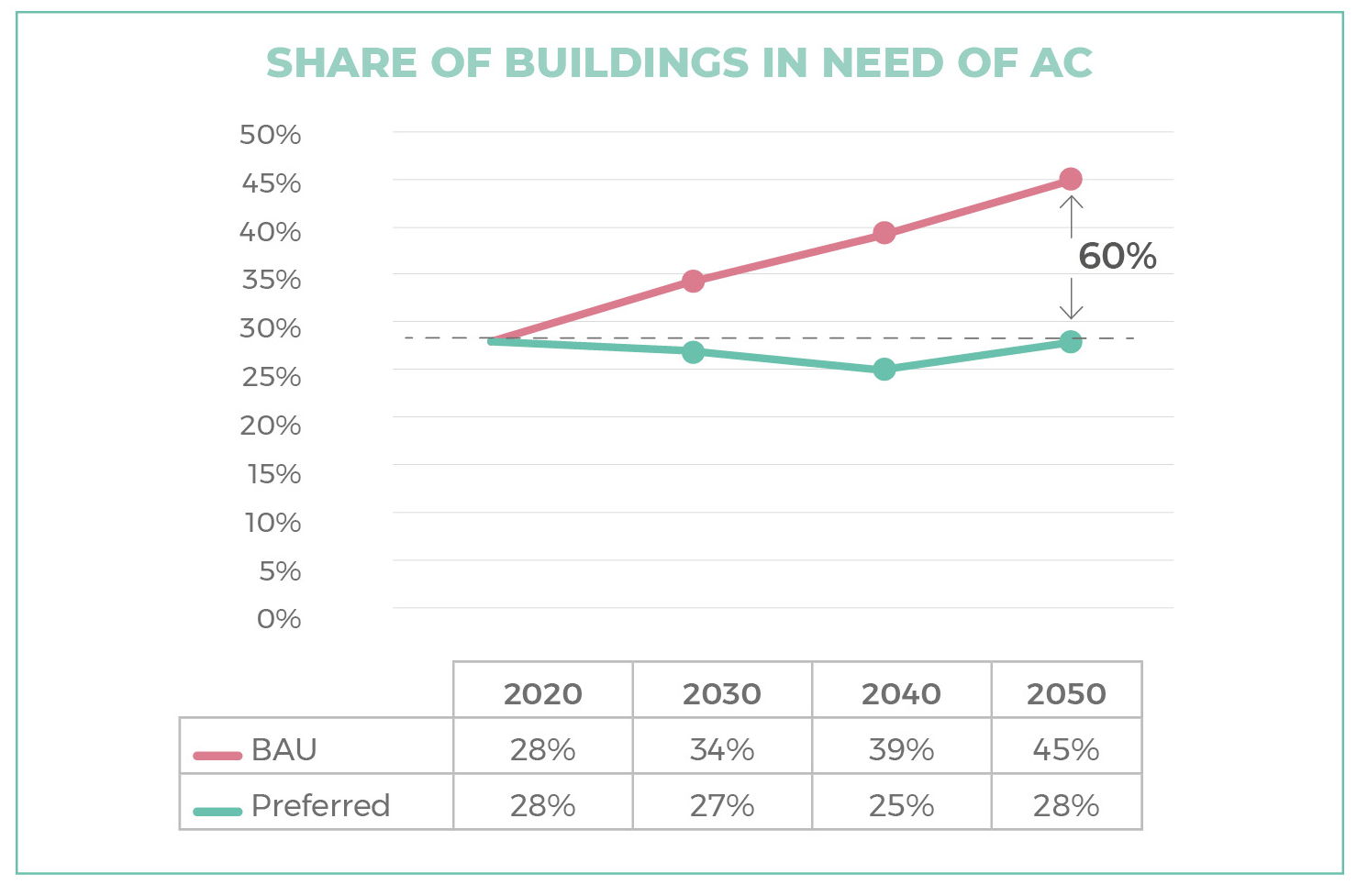According to new study findings the time is due to make automated solar shading mandatory in the European Energy Performance of Buildings Directive (EPBD).
Smart solar shading could reduce the energy consumption for space cooling in European buildings by up to 60% by 2050. It could prevent 100 million tonnes of CO2 emissions and save 285 billion euros. These are the findings of the scientific research conducted by Guidehouse, the first in comparing the impact of solar shading with the use of air conditioning in buildings. According to ES-SO, the umbrella organisation for the European solar shading industry, the study proves that there is an urgent need for automated solar shading to make buildings more climate-resistant and more energy-efficient. ES-SO is therefore keen to see this enacted by the European Energy Performance of Buildings Directive (EPBD).
Combatting Overheating in Buildings
As an umbrella organisation ES-SO is convinced that automated solar shading is the best defence against climate change and could form part of the structural solution. Based on the results of the Guidehouse study, ES-SO is urging EU policy makers to make solar shading compulsory under the EPBD, as a first solution – before using active cooling, such as air conditioning – in the fight against overheating.
Anders Hall, President of ES-SO: “Nowadays, buildings are the largest consumers of energy in Europe. They consume 40% of our energy and account for 36% of greenhouse emissions. The results of the Guidehouse study are definitely impressive, demonstrating a potential energy saving of up to 60% on space cooling of buildings by the year 2050. This research shows that there must be no further delay, and that solar shading must be the first solution in combatting overheating in buildings. We are already looking forward to a future in which buildings have to be more climate-resilient and less energy-dependent.”
Study: Solar shading vs. Air Conditioning
Climate change goes hand in hand with higher temperatures and longer-lasting and more intense heatwaves. Buildings requiring air conditioning are estimated to grow by 60%. In their study, Guidehouse, who act as advisors to public and commercial markets all over the world, analysed the impact of solar shading versus the use of air conditioning in buildings.
The simulations and the various scenarios are quite definite: if smart solar shading is used as the first measure before active cooling (preferred scenario), then we should be able to stop the growth of buildings requiring air conditioning between now and 2050.

Positive Impact of Solar shading
The results of the Guidehouse study show that automated solar shading has a definite positive impact and this not only on the planet, but also on society and people.
- Planet: A CO2 reduction strategy
Between now and 2050, approx. 100 million accumulated tonnes of greenhouse gas emissions (*) can be avoided in the preferred shading scenario of the Guidehouse study. This 100 million tonne reduction in CO2 emissions is equivalent to the annual CO2 emissions of 22 million cars.
(*) The CO2 factors are in line with the EPBD Impact Assessment 2021 and based on the Climate Target Plan 2030 of the European Commission. - Society: an energy-savings first strategy
In the preferred scenario, solar shading can reduce energy used in the EU building stock by 60% in space cooling. According to the Guidehouse study this energy saving (of approx. 870 Terawatt hours of electricity) is roughly equivalent to the final energy consumption of Spain, which has 47 million inhabitants. - People: a cost-effective strategy
The research shows that solar shading is a much more cost-effective investment than active space cooling, such as air conditioning, given that this solution could save up to 285 billion euros between now and 2050. This amount is similar to the GDP of countries like Finland and Luxembourg together.
Shady Attia, Professor in Sustainable Architecture and Building Technology at Liège University (Belgium) states that solar shading could potentially make a huge contribution to the European Green Deal. “Nowadays, less than 50% of buildings are equipped with solar shading, and a large proportion of this is not automated. The results of the Guidehouse study confirm my firm belief that solar shading is a much better solution than air conditioning for our planet, and that we urgently need to consider automated solar shading to make buildings more climate-resilient and more energy-efficient.”

(1) Solar shading, Guidehouse Germany GmbH, 5 November 2021
About ES-SO – www.es-so.com
ES-SO is a not-for-profit organisation established in Brussels. ES-SO aims to promote the positive impact of solar shading solutions on the management of indoor climate, thereby supporting the ambitious energy efficiency commitments of the EU. ES-SO serves as the umbrella organisation for the professional solar shading associations within EU Members countries. The European solar shading industry employs more than 450,000 people across the 27 Member States and generates annual sales of over €22 billion. Located in Brussels, ES-SO is ideally placed to ensure that the industry’s voice is heard and that it can make a positive contribution toward the EU energy objectives. ES-SO is also involved in various EU projects and acts in both a contributory and advisory capacity.


